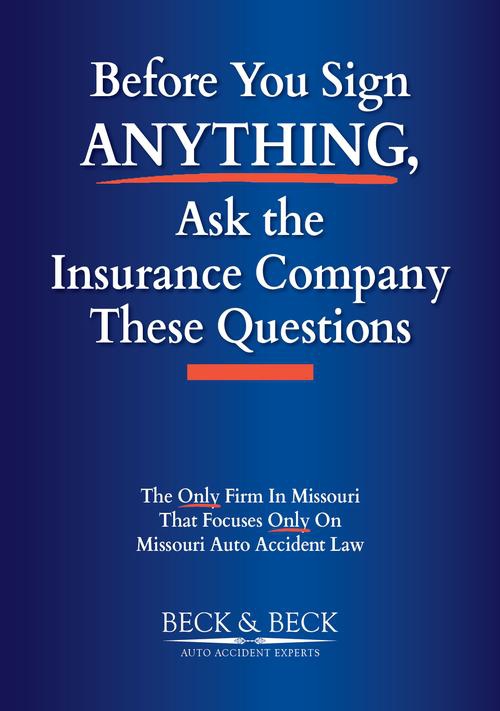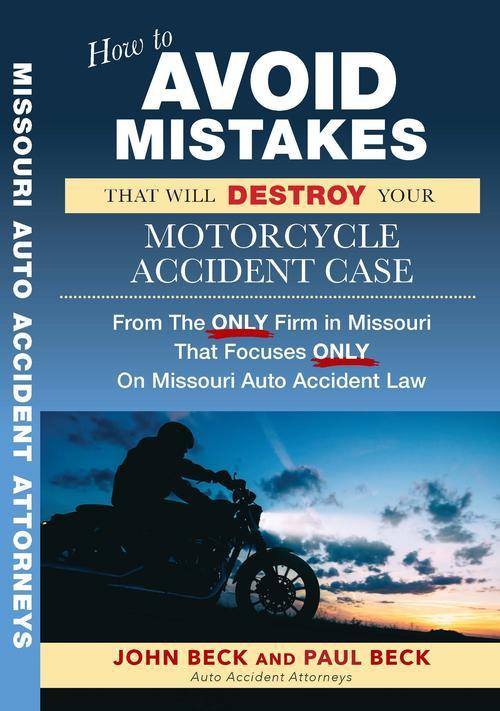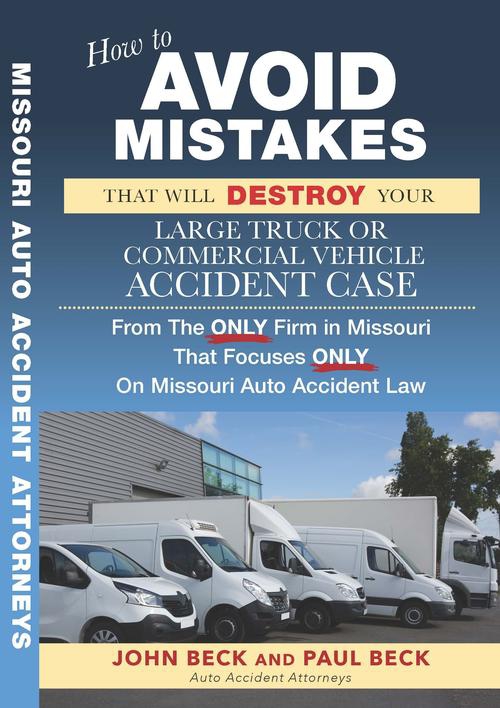Missouri highways are constantly filled with large trucks transporting goods across the state. While these trucks are essential for the economy, they also pose a significant danger to other drivers due to their size and large blind spots. Accidents can happen in an instant, leaving victims with severe injuries and long recovery periods.
Truck drivers face unique challenges when navigating busy roads. The sheer size of their vehicles creates extensive blind spots that limit visibility, often leading to dangerous situations. When a truck driver cannot see another vehicle in their blind spot, the risk of a collision increases dramatically.
In truck blind spot accidents in Missouri, the aftermath can be devastating. Victims may experience life-altering injuries, including broken bones, head trauma, or even fatalities. The financial strain from medical bills lost wages, and property damage only adds to the emotional toll.
These accidents are more complex than typical car accidents. Determining liability requires a deep understanding of truck safety regulations, driver behavior, and road conditions. An experienced Missouri truck accident lawyer can help victims navigate these challenges and seek compensation for their injuries.
Where Are The Blind Spots on a Truck?
Understanding where a truck’s blind spots are is crucial for all drivers sharing the road with these massive vehicles. Known as “no-zones,” these blind spots surround the truck and are areas where the driver has limited or no visibility. Recognizing these zones can help reduce the risk of accidents and keep everyone safe on the road.
Rear Blind Spot
The most dangerous blind spot on a truck is directly behind the trailer. This space can extend for several car lengths, meaning a driver following too closely may go completely unseen by the truck driver. If the truck suddenly stops or slows down, the vehicle behind may have little time to react, which can result in a serious rear-end collision.
Side Blind Spots
Another significant blind spot exists along the truck’s sides, with the right side being the most hazardous. This “right turn squeeze” occurs when vehicles try to pass a truck on the right while turning, leading to a sideswipe accident. The left side also has a blind spot, though smaller, but still large enough to pose a risk for nearby vehicles.
Front Blind Spot
There’s also a blind spot in front of the truck, just below the driver’s direct line of sight. Because the cab sits much higher than the average car, truck drivers can’t always see vehicles directly in front of them. This blind spot can stretch several feet, making it dangerous if the truck driver needs to stop suddenly or react quickly to traffic conditions.
Recognizing and avoiding truck blind spots is essential to preventing accidents. Drivers should avoid lingering in these no-zones and always give trucks plenty of space to maneuver.
What Are Some of The Common Types of Accidents Involving Truck Blind Spots?
Truck blind spots, or “no-zones,” contribute to many dangerous accidents on Missouri roads. These large areas around the truck where the driver has limited visibility often result in severe crashes. Below are some of the most common types of accidents caused by truck blind spots:
- Rear-End Collisions: Vehicles following too closely behind a truck can quickly disappear into the truck’s rear blind spot. If the truck stops suddenly or slows down, the trailing car may not have enough time to react, causing a rear-end collision. These accidents can be hazardous because trucks have much higher stopping distances than regular cars.
- Sideswipe Accidents: Trucks have extensive blind spots on both sides, with the right side being particularly hazardous. Vehicles attempting to pass or drive alongside the truck in these areas may be sideswiped if the truck changes lanes or makes a turn. The “right turn squeeze” is a common scenario where a vehicle gets caught as the truck turns.
- Front-End Collisions: Trucks have a blind spot directly in front of the cab, meaning the driver may not see smaller vehicles directly ahead. If a car cuts in front of a truck or stops suddenly, the truck driver may not have enough time to avoid a collision. These front-end crashes can be extremely severe, given the truck’s size and weight.
- Underride Accidents: Underride accidents occur when a smaller vehicle gets trapped underneath the trailer, typically during a lane change or sudden stop. Due to the lack of protection for the smaller vehicle in such scenarios, these accidents are often fatal.
- Right Turn Accidents: When a truck makes a right turn, it may swing wide, increasing the risk of a collision with vehicles in the truck’s right blind spot. This often leads to serious side-impact crashes, especially in busy intersections or narrow streets.
- Jackknife Accidents: A jackknife accident happens when a truck’s cab and trailer fold at a sharp angle, resembling a folding pocketknife. These accidents often occur when a driver brakes suddenly or loses control, causing the trailer to swing out. Jackknifing can lead to multi-vehicle crashes, as the trailer blocks multiple lanes of traffic.
- Improperly Loaded Cargo: Improperly loaded cargo can lead to accidents if the weight isn’t distributed evenly or if the cargo shifts during transport. Trucks carrying unbalanced loads are more prone to tipping or losing control, especially on curves or during sudden maneuvers. This can cause accidents involving nearby vehicles.
- Tire Blowouts: A tire blowout can cause a truck driver to lose control, leading to severe accidents. Large trucks are especially vulnerable to blowouts because of their weight and tire wear and tear. When a blowout occurs, the truck may swerve into other lanes, or debris from the tire can cause other vehicles to crash.
- Rollover Accidents: Rollover accidents occur when a truck tips over onto its side, usually due to high speeds, sharp turns, or uneven loads. Rollovers can crush nearby vehicles and create hazardous road blockages. Trucks with high centers of gravity, such as those carrying tall or unevenly loaded cargo, are at greater risk of rollovers.
Understanding these common truck blind spot accidents can help drivers stay alert and avoid dangerous situations.
What Are Some of the Factors Contributing to These Missouri Truck Accidents?
Several factors contribute to truck blind spot accidents in Missouri, making these collisions common and dangerous. Many of these accidents stem from driver behavior, truck design, and environmental conditions. Understanding these contributing factors is crucial in preventing future accidents.
Driver Error
One of the most significant factors is driver error. Truck drivers are responsible for managing large vehicles with limited visibility, and a moment of distraction can have severe consequences. Inadequate training or failure to check blind spots before changing lanes or turning can lead to devastating accidents. Fatigue, common among truck drivers working long hours, can also impair their judgment and reaction time, making it easier to miss vehicles in their blind spots.
Truck Design
Another factor is truck design, which naturally creates extensive blind spots due to the vehicle’s size and shape. These no-zones, especially on the sides and rear, leave truck drivers with limited visibility even when alert and cautious. The height and length of the truck can make it difficult to see smaller vehicles in nearby lanes or those closely following behind.
Poor Weather Conditions
Poor weather conditions can also contribute to truck blind spot accidents. Rain, fog, or snow reduces visibility for all drivers, but the impact is even more significant for truck drivers struggling with large blind spots. In these conditions, detecting other vehicles in the no-zones around the truck becomes even more challenging.
Inadequate Mirror Systems
In some cases, inadequate mirror systems contribute to blind spot accidents. While trucks are equipped with large side mirrors, they don’t always cover all areas around the vehicle. If a truck lacks proper mirror adjustments or advanced blind spot monitoring technology, the likelihood of a collision increases.
Improper Lane Changes
Finally, improper lane changes by both truck drivers and nearby vehicles are a major cause of blind spot accidents. Drivers may not realize how large a truck’s blind spots are and may linger too long in those areas. Similarly, a truck driver might not see a car in their blind spot and change lanes without realizing the danger.
Recognizing these contributing factors can help truck drivers and other motorists take preventive measures to reduce the risk of blind spot accidents in Missouri.
Who is Liable in a Blind Spot Truck Accident in Missouri?
Determining liability in a blind spot truck accident in Missouri can be complex, as multiple parties may share responsibility. Understanding who is at fault often requires thoroughly investigating the accident, considering factors like driver behavior, vehicle condition, and company policies. Here’s a look at the potential liable parties in these cases.
Truck Driver Liability
In many cases, the truck driver may be liable for the accident. Drivers are responsible for checking their blind spots before changing lanes or making turns. If a truck driver fails to take appropriate precautions, such as adequately adjusting mirrors or using signals, and causes an accident, they may be considered negligent. Driver fatigue, distraction, or impaired driving can also contribute to their liability.
Trucking Company Liability
The trucking company may also be liable if it contributed to the accident through poor practices. For instance, if the company failed to provide adequate training to the driver on safely handling blind spots or maintained an unreasonable schedule that led to driver fatigue, they could share responsibility. Additionally, if the company neglected regular maintenance of the truck’s mirrors or blind spot monitoring systems, they could be liable for the resulting accident.
Vehicle Manufacturers
Vehicle manufacturers may sometimes be held responsible if a defective part, such as a malfunctioning mirror or blind spot monitoring system, contributed to the accident. If a truck’s equipment failed to work as intended and this defect caused or worsened the blind spot accident, the manufacturer could be liable for the damages.
Other Drivers
It’s also possible for other drivers involved in the accident may also share liability. For example, if a driver lingers in a truck’s blind spot or makes an unsafe maneuver, contributing to the crash, they may be partially responsible. Missouri follows a comparative fault system, meaning multiple parties can share the blame for an accident.
By thoroughly examining the circumstances of the accident, legal professionals can help identify the liable parties and pursue appropriate compensation for those affected.
What Types of Injuries Are Caused by Truck Blind Spot Accidents?
Truck blind spot accidents can result in severe injuries due to the size and weight of commercial trucks. When a vehicle or pedestrian is caught in a truck’s blind spot, the consequences can be devastating. Here are some of the most common types of injuries caused by truck blind spot accidents:
- Head and Brain Injuries: The force of a collision involving a large truck can lead to traumatic brain injuries (TBIs), including concussions, skull fractures, or more severe brain damage. These injuries may cause long-term cognitive, physical, and emotional impairments, sometimes requiring extensive rehabilitation.
- Spinal Cord Injuries: The impact of a truck accident can damage the spinal cord, leading to partial or complete paralysis. These injuries often result in lifelong challenges, including mobility issues and the need for specialized medical care and equipment.
- Broken Bones and Fractures: Due to the sheer force of a collision with a large truck, victims often suffer broken bones, particularly in the arms, legs, ribs, and pelvis. Some fractures may require surgery, physical therapy, or long-term immobilization to heal.
- Internal Injuries: The violent nature of a blind spot accident can cause damage to internal organs, such as the lungs, liver, or kidneys. Internal injuries are life-threatening and may not always be immediately apparent, requiring prompt medical attention.
- Whiplash and Neck Injuries: Sudden impact from a truck crash can result in neck injuries like whiplash, which occurs when the head is violently jerked back and forth. This can cause pain, stiffness, and long-term discomfort.
- Lacerations and Bruises: Victims of truck accidents often experience deep cuts and bruising due to shattered glass, debris, or direct impact. These injuries can result in scarring, infection, and emotional trauma.
Truck blind spot accidents frequently lead to serious, life-changing injuries. Understanding these risks highlights the importance of road safety and the need for caution around large trucks to prevent such devastating outcomes.
What Are My Legal Options After a Blind Spot Truck Accident in Missouri?
If you’ve been involved in a blind spot truck accident in Missouri, you have several legal options to seek compensation for your injuries and damages.
Filing a Personal Injury Claim
One option is to file a personal injury claim. This allows you to pursue compensation for medical bills, lost wages, pain and suffering, and more. To succeed, you must prove that the truck driver’s negligence, such as failing to check blind spots, directly caused the accident.
Pursuing a Claim Against the Trucking Company
You may also be able to hold the trucking company liable. Companies are responsible for ensuring that their drivers are adequately trained and their vehicles are safe. If the company failed in its duties, it could share responsibility for the accident.
Seeking Insurance Compensation
Another option is to seek a settlement through the trucking company’s insurance. These companies carry extensive policies, but insurance providers may attempt to minimize your compensation. An experienced attorney can help negotiate a fair settlement.
Understanding your legal options after a blind spot truck accident is essential to receiving the compensation you deserve for your injuries and losses.
Experienced Truck Accident Lawyers in St. Louis, Missouri
At Beck & Beck Missouri Car Accident Lawyers, we are dedicated to helping victims of truck accidents in St. Louis, Missouri. We understand the devastating impact these accidents can have on your life, and we are committed to fighting for the compensation you deserve.
Our experienced team will carefully investigate your case, identify all liable parties, and guide you through the legal process with compassion and expertise. If you or a loved one has been injured in a truck accident, don’t face the aftermath alone. Contact us today for a free consultation, and let us help you pursue justice and recovery.
Some of the locations our legal team serves includes St. Louis, Florissant, Maplewood, Richmond Heights, University City, Jennings, and more.







